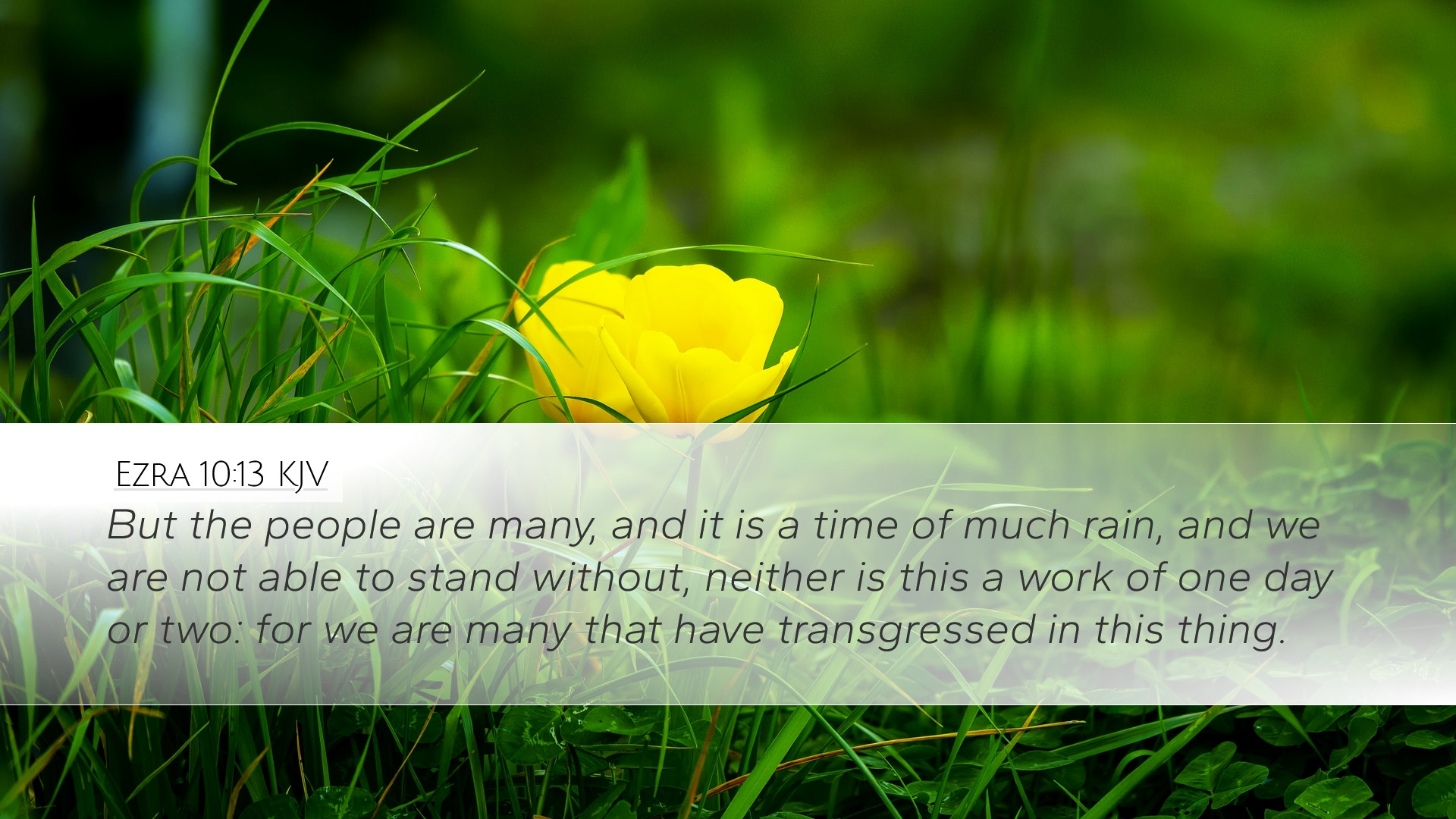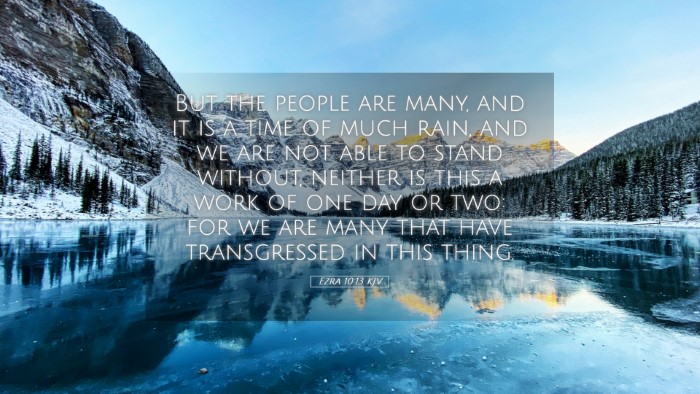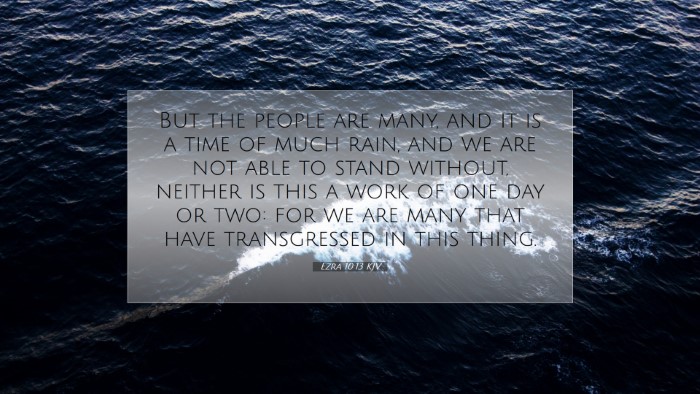Contextual Overview
The context of Ezra 10 revolves around the profound realization of sin among the Israelites who returned from Babylonian exile. Led by Ezra, a priest and scribe, the people became aware of their transgressions, particularly regarding intermarriage with foreign women, which was contrary to their covenant with God.
Commentary Insights
Matthew Henry
Matthew Henry emphasizes that Ezra’s leadership is essential during this time of crisis. He notes that Ezra's role as a scribe and priest places him in a unique position to mediate between God and the people. His acknowledgment of the corporate sin of the people sets the stage for communal repentance.
Henry also points out the critical nature of addressing sin in a timely manner, suggesting that procrastination in dealing with spiritual matters only compounds the issues at hand. The rains might symbolize judgment or difficulty but also serve as a reminder that God's grace remains accessible through earnest repentance.
Albert Barnes
Albert Barnes delves into the practical implications highlighted in this verse. He notes that the physical conditions (heavy rain) illustrate the urgency and difficulty of the situation, embodying the struggle between spiritual needs and physical realities. Barnes asserts that sincere repentance often requires facing adverse circumstances, which can lead to spiritual growth and renewal.
Moreover, Barnes argues that the people’s confession indicates a longing for restoration that can only come through collective action and acknowledgment of God’s holiness. He posits that true revival often emerges from understanding the depth of sin and the commitment to return to God’s standards.
Adam Clarke
Adam Clarke provides an intricate analysis of the societal factors contributing to the intermarriage issue. He discusses the historical context of the Israelites’ return from Babylon, highlighting how pressures from the surrounding nations may have led to the compromise of their covenantal faithfulness.
Clarke emphasizes the necessity of this public confession and the communal acknowledgment of wrongdoing. He mentions that the public nature of their sin and the subsequent public repentance serve as a powerful testimony of God’s faithfulness and the importance of following God’s precepts in every aspect of life.
Conclusion
Ezra 10:13 serves as a crucial reminder of the necessity of facing sin within the community of faith. Through the insights of esteemed commentators like Matthew Henry, Albert Barnes, and Adam Clarke, we gain a deeper understanding of the implications of this verse for both its original audience and contemporary believers. The call to repentance, the role of communal identity, and the recognition of the challenges inherent in that process underscores the importance of reliance on God’s mercy and leadership in navigating the complexities of faith. In doing so, both leaders and congregants can find hope and strength in the truth that lives transformed through repentance reflect the heart of God.


